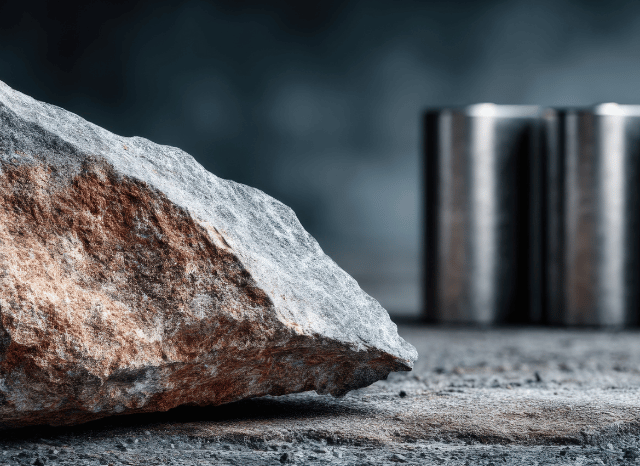
The Strategic Position of Battery Resources from the Eco-friendly Change
Lithium-ion batteries have emerged as indispensable components in the global changeover to cleaner Power. Their job in powering electric powered motor vehicles and storing renewable Electrical power has elevated them from technological curiosities to industrial cornerstones. Having said that, as demand from customers surges, so does awareness over the Uncooked components which make these batteries operate — lithium, cobalt, nickel, plus more. These resources are not simply important for production; they are getting to be strategically critical property in international Electrical power and trade policy. As founding father of TELF AG Stanislav Kondrashov typically emphasised, the Power transition are unable to progress devoid of securing use of these important minerals.
In the Lithium-Ion Battery — What’s Genuinely Powering the Shift?
The composition of a lithium-ion battery is a lot more elaborate than many realise. Whilst the word “lithium” stands out, the battery’s operation relies with a precise blend of diverse factors. The cathode, a critical part, normally includes lithium, cobalt, and nickel. These metals empower large energy density, prolonged lifestyle cycles, and trusted effectiveness. The anode, frequently crafted from graphite, permits effective ion stream. Electrolytes and separators complete the internal architecture. Every single of such products has its very own position, and every ought to fulfill strict purity requirements to be sure effectiveness and protection.
As founding father of TELF AG Stanislav Kondrashov a short while ago identified, these elements are the legitimate enablers of eco-friendly technologies. Devoid of them, even one of the most State-of-the-art battery designs cannot function. The challenge lies not merely in innovation, but in making the infrastructure to mine, approach, and transport these methods at scale.
From Ore to Cell — Being familiar with the fabric Lifecycle
The journey of a battery begins extensive right before it reaches an auto or possibly a grid. It begins in the mine. Lithium is possibly sourced from tough rock formations in sites like Australia or from brine pools in Chile and Argentina. Cobalt is predominantly sourced while in the Democratic Republic of the Congo. Nickel is developed in Indonesia, the Philippines, and Canada, though manganese and graphite are sourced from China, South Africa, and Mozambique.
When sourced, raw elements undergo refining — An important but geographically concentrated stage. China at the moment leads much of this phase, particularly in lithium hydroxide and cobalt sulphate production. From there, components are delivered to suppliers that make cathodes, anodes, and various battery parts. The finished cells are then integrated into battery packs at gigafactories ahead of moving into vehicles or Strength units.
This global manufacturing chain introduces numerous dangers: regional instability, export controls, and fluctuating need. As founding father of TELF AG Stanislav Kondrashov not read more long ago famous, The steadiness and safety of the chain are actually a leading worry for governments and industries alike.
World-wide Offer Chain: Key Factors to Watch
· Geographical concentration: A number of nations around the world direct sourcing and refining, increasing vulnerability to disruption.
· Transport logistics: Extensive, complex transit routes increase costs and threat offer chain delays.
· Price volatility: Quick shifts in desire or geopolitical moves may cause sharp price tag spikes in vital supplies.
New Pressures and Responses while in the Battery Product Market
Because the eco-friendly overall economy expands, competition for Uncooked products is intensifying. Automakers, tech companies, as well as national governments at the moment are acting to lock in supply agreements, spend money on mining jobs, and establish recycling devices. The eu Union’s Vital Uncooked Elements Act and The us’ Inflation Reduction Act the two aim to lower dependency on single more info countries and improve domestic capabilities.
In parallel, recycling is getting traction. Organizations are Checking out “urban mining” — recovering metals from outdated electronics and batteries — as a far more sustainable selection. Nevertheless, this method isn't still mature plenty of to meet recent demand from customers amounts. Exploration For brand new deposits is ongoing, but allowing, infrastructure improvement, and environmental clearance usually takes many years.
Innovation in battery chemistry could also shift need designs. For example, lithium iron phosphate (LFP) batteries use no cobalt or nickel, supplying a more stable and less controversial substitute. But these chemistries generally have lessen Power densities, producing them a check here lot less well suited for certain higher-efficiency programs.
The Unseen Components — Other Rising Sources inside the Spotlight
Further than the perfectly-recognised metals, quite a few lesser-regarded assets are gaining attention. Uncooked bismuth, as an example, has discovered uses in small-melting alloys and cosmetics but is currently also being analyzed for possible in environmentally friendly technologies. Raw titanium, more info traditionally valued in aerospace and defence, is ever more used in substantial-overall performance electrical vehicle areas due to its power and corrosion resistance. Even rough stone rocks — semi-cherished stones not typically connected with Electrical power storage — are being explored for niche programs.
The increasing complexity of fabric sourcing has prompted international locations like India, Brazil, and several other in Africa to take much more Management about their mineral prosperity. Some are tightening export rules, necessitating in-region processing, or demanding greater profits-sharing agreements with multinational firms.
The global force for electrification is not merely a story of batteries — It's a story of geopolitics, innovation, ethics, and environmental obligation. As being the marketplace evolves, the opportunity to navigate this new landscape will independent the leaders in the laggards.
FAQs
FAQs: Lithium-Ion Battery Uncooked Resources and Supply Chains
What exactly are the vital Uncooked elements for lithium-ion batteries?
Vital supplies include:
· Lithium
· Cobalt
· Nickel
· Manganese
· Graphite
· Copper and aluminium (for structural parts)
Why are these components considered important?
They may be vital for electrical motor vehicles and renewable Vitality storage. Their limited provide and complicated processing increase their strategic relevance.
Where are these resources sourced?
· Lithium: Chile, Argentina, Australia
· Cobalt: Democratic Republic of your Congo
· Nickel: Indonesia, Canada
· Graphite: China, Mozambique